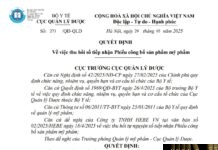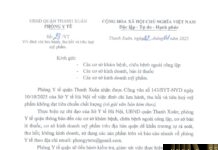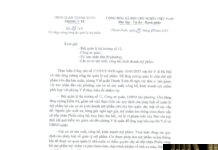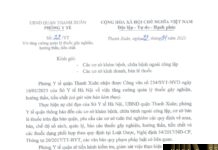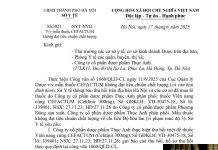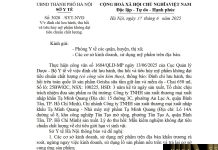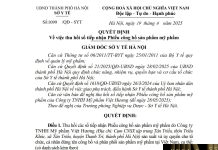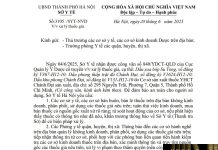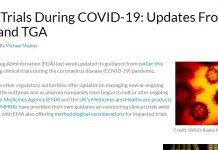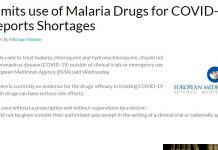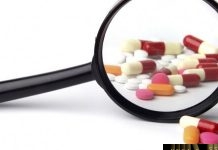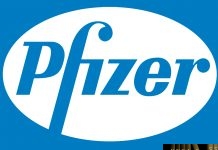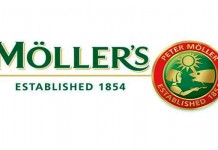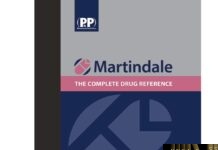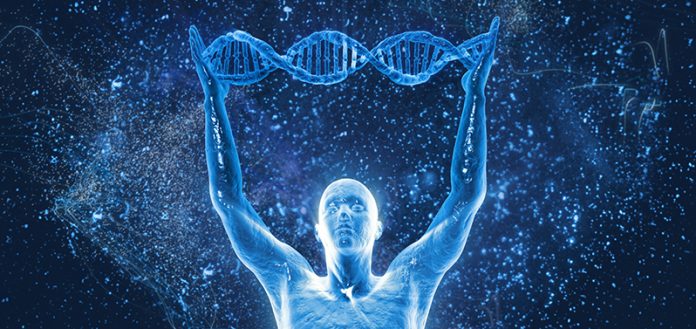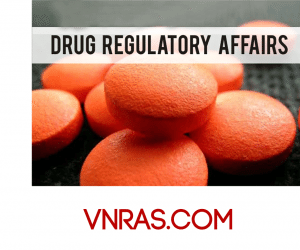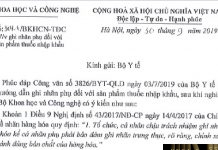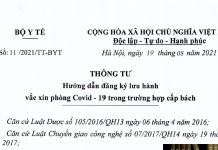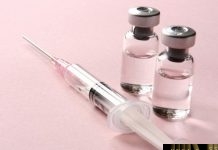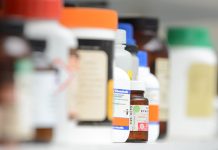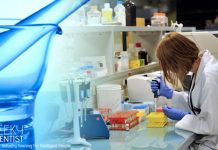DRAFT Validation of analytical procedures for vaccines
ASEAN GUIDELINES FOR VALIDATION OF ANALYTICAL PROCEDURES FOR VACCINES
Amendments from NCL ASEAN Experts
18 May 2016
TABLE OF CONTENTS
- Introductions
- Types of analytical procedures to be validated
- Analytical performance characteristics
3.1 Accuracy
3.2 Relative Accuracy
3.3 Precision
3.4 Specificity or selectivity
3.5 Linearity
3.6 Range
3.7 Detection Limit
3.8 Quantitation Limit
3.9 Robustness
3.10 System suitability testing
- Glossary
- References
- ANNEX: EXAMPLES OF METHOD VALIDATION PROTOCOL
- Potency test by Direct challenge method in animal
- Potency test by Determination of neutralizing antibody titre in animal model
- Virus titration using cell substrate
- Biochemical assay
VALIDATION OF ANALYTICAL PROCEDURESFOR VACCINES
- Introduction
The objective of validation of an analytical procedure for vaccines is to demonstrate that it is suitable for its intended purpose. This guideline is to provide the guidance and recommendation of validation of the analytical procedures for submission of vaccines part of registration applications within ASEAN. Quality control test of vaccines are both chemical tests and bioassays. The ASEAN guidelines for validation of analytical procedures for vaccines can be applied for both chemical tests and bioassays. Bioassays by measuring biological activities of vaccines are important parts for quality assessment relating to safety and efficacy of these products.
Three major procedures used to measure biological activities are as following:
- Animal-based biological assays, which measure an organism’s biological response to the product such as immune response and weight gain
- Cell culture-based biological assays, which measure biochemical or physiological response at the cellular level such as clumping, cell lysis, cell fusion, or generation of a specific detectable chemical.
- Biochemical assays or binding assay, which measure biological activities such as enzymatic reaction rates or biological responses induced by immunological interactions
All relevant data collected during validation and formulae used for calculating validation
characteristics should be submitted and discussed as appropriate. Reference materials with assigned unitages (amount in units) should be used throughout the validation study. For chemical assay well-characterized reference materials with assigned purity should be used.
The degree of purity depends on the intended use.
In practice, it is usually possible to design the experimental work such that the appropriate
validation characteristics can be considered simultaneously to provide a sound, over all knowledge of the capabilities of the analytical procedure, for instance: specificity,
linearity, range, accuracy and precision. The compendial methods are not required to be
validated, but merely verify their suitability under actual conditions of use.
- Compendial Analytical Procedure (Source: US FDA, CDER, CBER. Analytical Procedures and Methods Validation for Drugs and Biologics Guidance for Industry, 2015.
The suitability of an analytical procedure (e.g., USP/NF, the Official Methods of Analysis of AOAC International, or other recognized standard references) should be verified under actual conditions of use. Information to demonstrate that USP/NF analytical procedures are suitable for the drug product or drug substance should be included in the submission and generated under a verification protocol.
The verification protocol should include, but is not limited to: (1) compendial methodology to be verified with predetermined acceptance criteria, and (2) details of the methodology (e.g., suitability of reagent/s, equipment, component/s, chromatographic conditions, column, detector type/s, sensitivity of detector signal response, system suitability, sample preparation and stability). The procedure and extent of verification should dictate which validation characteristic tests should be included in the protocol. Considerations that may influence what characteristic tests should be in the protocol may depend on situations such as whether specification limits are set tighter than compendial acceptance criteria. Robustness studies of compendial assays do not need to be included, if methods are followed without deviations.
- Types of Analytical Procedures to be Validated
The discussion of the validation of analytical procedures is directed to the four most
common types of analytical procedures:
– Identification tests.
– Quantitative tests for impurities’ content.
– Limit tests for the control of impurities.
– Quantitative tests of the active moiety in samples of drug substance or drug product or
other selected component(s) in the drug product.
A brief description of the types of tests considered in this document is provided below.
– Identification tests are intended to ensure the identity of an analyte in a sample. Specific characteristic of each particular vaccine such as morphology, biochemical, immunochemical or immunological properties is considered on case by case basis. Immunological activity between antigen and specific antibody is commonly used for identification of most vaccines. Potency test can be served as identification test of some vaccines.
– Impurities in the vaccines may also affect the vaccine’s safety or efficacy, especially product-related impurities which include residual proteins or DNA. Similarly, a vaccine may contain process-related impurities (e.g., benzonase) that are added during fermentation or upstream purification processes and cleared downstream. (USP, acceptable) Testing for impurities can be either a quantitative test or a limit test for the impurity in as sample. Either test is intended to accurately reflect the purity characteristics of the sample.
A quantitative test requires more validation characteristics than a limit test.
– Assay procedures are intended to measure the analyte present in a given sample. In the context of this document, the assay represents a quantitative measurement of the major component(s) in the drug substance. For the drug product, similar validation characteristics also apply when assaying for the active or other selected component(s). The same validation characteristics may also apply to assays associated with other analytical procedures. Bioassays that are commonly used for vaccine potency estimation can be distinguished from chemical tests by their reliance on a biological substrate (e.g., animals, living cells, or functional complexes of target receptors).
The objective of the analytical procedure should be clearly understood since this will govern the validation characteristics which need to be evaluated. Typical validation characteristics which should be considered are listed below:
Accuracy
Relative accuracy
Precision
– Repeatability
– Intermediate Precision
– Reproducibility
Specificity or Selectivity
Detection Limit
Quantitation Limit
Linearity
Range
Robustness
System suitability
Each of these validation characteristics is defined in the Glossary. The table lists those validation characteristics regarded as the most important for the validation of different types of analytical procedures. This list should be considered typical for the analytical procedures cited but occasional exceptions should be dealt with on a case-by-case basis. It should be noted that robustness is not listed in the table but should be considered at an appropriate stage in the development of the analytical procedure. Furthermore, revalidation may be necessary in the following circumstances:
– changes in the process for synthesis of the drug substance;
– changes in the composition of the finished product;
– changes in the analytical procedure; when analytical methods are transferred from one laboratory to another; or major pieces of equipment change.
The degree of revalidation required depends on the nature of the changes. Certain other changes may require validation as well.
| Relevant performance parameters for validating different types of analytical procedures
Impurities Potency |
||||
| Characteristics | Identity | Testing for impurities | Assay
Content/Potency |
|
| Quantitative | Limits | |||
| Accuracy/ relative accuracy | – | + | – | + |
| Precision | ||||
| Repeatability | – | + | – | + |
| Intermediate Precision | – | +(1) | – | +(1) |
| Linearity | – | + | – | + |
| Range | – | + | – | + |
| Specificity or Selectivity (2) | + | + | + | + |
| Detection Limit | + | -(3) | + | – |
| Quantitation Limit | – | + | – | – |
-signifies that this characteristic is not normally evaluated
+signifies that this characteristic is normally evaluated
- In case where reproducibility has been performed, intermediate precision is not needed
- Lack of specificity of one analytical procedure could be compensated by other supporting analytical procedure(s)
- May be needed in some cases
The suitability of a compendial analytical procedure should be verified under actual conditions of use. Information to demonstrate that compendial analytical procedures are suitable for the drug product or drug substance should be included in the submission and generated under a verification protocol. The verification protocol should include, but is not limited to :
(1) compendial methodology to be verified with
predetermined acceptance criteria, and
(2) details of the methodology (e.g. suitability of reagent(s), equipment, component(s), chromatographic conditions, column, detector type(s), sensitivity of detector signal response, system suitability, sample preparation and stability).
The procedure and extent of verification should dictate which validation characteristic tests should be included in the protocol (e.g., specificity, LOD, LOQ, precision, accuracy). Considerations that may influence what characteristic tests should be in the protocol may depend on situations such as whether specification limits are set tighter than compendial acceptance criteria, or RT or RRT profiles are changing in chromatographic methods because of the synthetic route of drug substance or differences in manufacturing process or matrix of drug product.
Robustness studies of compendial assays do not need to be included, if methods are followed without deviations.”
- Analytical Performance Characteristics
3.1 ACCURACY
Accuracy is the closeness of agreement between the actual value of the analyte and the measured value. Spike and recovery studies are performed to measure accuracy: a known sample is added to the excipients and the actual drug value is compared to the value found by the assay. Accuracy is expressed as the bias or the % error between the observed value and the true value (assay value/actual value x 100%). Accuracy is not often possible for vaccines because pure standards are not available. For such products, a comparison is usually made to a reference product which is run in parallel in the same assay. Acceptable results are based on specifications for the actual reference value, or specifications for the ratio of the sample value to the reference value. Accuracy should be established across the specified range of the analytical procedure
3.1.1. Assay
3.1.1.1 Drug Substance
Several methods of determining accuracy are available:
- a) application of an analytical procedure to an analyte of known purity (e.g. reference
material);
- b) comparison of the results of the proposed analytical procedure with those of a second well-characterized procedure, the accuracy of which is stated and/or defined (independent procedure, see 3.4.2.);
- c) accuracy may be inferred once precision, linearity and specificity have been established.
3.1.1.2 Drug Product
Several methods for determining accuracy are available:
- a) application of the analytical procedure to synthetic mixtures of the drug product components to which known quantities of the drug substance to be analysed have been added;
- b) in cases where it is impossible to obtain samples of all drug product components, it may be acceptable either to add known quantities of the analyte to the drug product or to compare the results obtained from a second, well characterized procedure, the accuracy of which is stated and/or defined (independent procedure, see 3.4.2.).
- c) accuracy may be inferred once precision, linearity and specificity have been established.
3.1.2. Impurities (Quantitation)
Accuracy should be assessed on samples (drug substance/drug product) spiked with known amounts of impurities. In cases where it is impossible to obtain samples of certain impurities and/or degradation products, it is considered acceptable to compare results obtained by an independent procedure (see 3.4.2.) The response factor of the drug substance can be used. It should be clear how the individual or total impurities are to be determined e.g., weight/weight or area percent, in all cases with respect to the major analyte.
3.1.3 Recommended Data
Accuracy should be assessed using a minimum of 9 determinations over a minimum of 3 concentration levels covering the specified range (e.g. 3 concentrations and 3 replicates each of the total analytical procedure). Accuracy should be reported as percent recovery by the assay of known added amount of analyte in the sample or as the difference between the mean and the accepted true value together with the confidence intervals.
3.2 RELATIVE ACCURACY
The relative accuracy of a relative potency bioassay is the relationship between measured relative potency and known relative potency. Relative accuracy in bioassay refers to a unit slope between log measured relative potency vs. log level when levels are known. The most common approach to demonstrating relative accuracy for relative potency bioassays is by construction of target potencies by dilution of the standard material or a Test sample with known potency. This type of study is often referred to as a dilutional linearity study. The results from a dilutional
linearity study should be assessed using the estimated relative bias at individual levels and via a trend in relative bias across levels. The relative bias at individual levels is calculated as follows:
% Relative Bias = 100 x Measured potency – 1
Target potency
The trend in bias is measured by the estimated slope of log measured potency vs log target
potency, which should be held to a target acceptance criterion. If there is no trend in relative biasacross levels, the estimated relative bias at each level can be held to a prespecified target acceptance criterion that has been defined in the validation protocol
3.3 PRECISION
Precision is the closeness of agreement between the values obtained in an assay. It is expressed as the coefficient of variation (% CV).
Although chemical assays and immunoassays are often capable of achieving near single digit percent coefficient of variation such as less than 10% (%CV, or percent relative standard deviation, %RSD), a more liberal restriction might be placed on bioassays, such as animal potency bioassays, that operate with much larger variability, in some cases may be larger than 50% (measure as %GCV which can be compared to %CV), in this case the validation goal might be to characterize the method, using the validation results to establish an assay formal that is predicted to yield reliable product measurements. A sound justification for target acceptance criteria or use of characterization should be included in the validation protocol.
3.3.1 Repeatability
Repeatability expresses the precision under the same operating conditions over a short interval of time. Repeatability is also termed intra-assay precision.
Repeatability should be assessed using:
- a) a minimum of 9 determinations covering the specified range for the procedure (e.g. 3
concentrations and 3 replicates each) or
- b) a minimum of 6 determinations at 100% of the test concentration.
3.3.2 Intermediate Precision (IP)
The extent to which intermediate precision should be established depends on the circumstances under which the procedure is intended to be used. The applicant should establish the effects of random events on the precision of the analytical procedure. Typical variations to be studied include days, analysts, equipment, etc. It is not considered necessary to study these effects individually. The use of an experimental design (matrix) is encouraged.
Intermediate precision may be assessed using three dilutions of the sample (high/medium/low concentration in the range) and test triplicates of each dilution of the sample in three different assays.
3.3.3 Reproducibility
Reproducibility is the precision between laboratories usually in collaborative studies and not directly relevant to assay validation in a manufacturing facility. (use existing guideline)
3.3.4 Recommended Data
The SD, RSD or CV and confidence interval (CI) should be reported for each type of precision investigated.
3.4 SPECIFICITY or SELECTIVITY
An investigation of specificity should be conducted during the validation of identification tests, the determination of impurities and the assay. Demonstrating specificity requires evidence of lack of interference (also known as selectivity) from matrix components such as manufacturing process components or degradation products or other components in the vaccines so that measurements describe the target component only. The procedures used to demonstrate specificity will depend on the intended objective of the analytical procedure. It is not always possible to demonstrate that an analytical procedure is specific for a particular analyte (complete discrimination). In this case a combination of two or more analytical procedures is recommended to achieve the necessary level of discrimination.
3.4.1. Identification
Suitable identification tests should be able to discriminate between compounds of closely
related structures which are likely to be present. The discrimination of a procedure may be confirmed by obtaining positive results (perhaps by comparison with a known reference material) from samples containing the analyte, coupled with negative results from samples which do not contain the analyte. In addition, the identification test may be applied to materials structurally similar to or closely related to the analyte to confirm that a positive response is not obtained. The choice of such potentially interfering materials should be based on sound scientific judgment with a consideration of the interferences that could occur.
3.4.2. Assay and Impurity Test(s)
Bioassay can be accessed via parallel dilution of the standard sample with and without a spike addition of the potentially interfering compound. If the curves are similar and the potency
conforms to expectations of a Standard-to-Standard comparison, the bioassay is specific against the compound. For these assessments both similarity and potency may be assessed using appropriate equivalence tests. (USP 2010)
For chromatographic procedures, representative chromatograms should be used to demonstrate specificity and individual components should be appropriately labelled. Similar considerations should be given to other separation techniques. Critical separations in chromatography should be investigated at an appropriate level. For critical separations, specificity can be demonstrated by the resolution of the two components which elute closest to each other. In cases where a non-specific assay is used, other supporting analytical procedures should be used to demonstrate overall specificity. For example, where a titration is adopted to assay the drug substance for release, the combination of the assay and a suitable test for impurities can be used. The approach is similar for both assay and impurity tests:
3.4.2.1 Impurities are available
For the assay, this should involve demonstration of the discrimination of the analyte in the presence of impurities and/or excipients; practically, this can be done by spiking pure substances (drug substance or drug product) with appropriate levels of impurities and/or excipients and demonstrating that the assay result is unaffected by the presence of these materials (by comparison with the assay result obtained on unspiked samples). For the impurity test, the discrimination may be established by spiking drug substance or drug product with appropriate levels of impurities and demonstrating the separation of these impurities individually and/or from other components in the sample matrix.
3.4.2.2 Impurities are not available
If impurity or degradation product standards are unavailable, specificity may be demonstrated by comparing the test results of samples containing impurities or degradation products to a second well-characterized procedure e.g. compendial methods or other validated analytical procedure (independent procedure). As appropriate, this should include samples stored under relevant stress conditions: light, heat, humidity, acid/base hydrolysis and oxidation.
– for the assay, the two results should be compared.
– for the impurity tests, the impurity profiles should be compared.
Peak purity tests may be useful to show that the analyte chromatographic peak is not attributable to more than one component (e.g., diode array, mass spectrometry).
3.5 LINEARITY
A linear relationship should be evaluated across the range (see section 3.6) of the analytical procedure. It may be demonstrated directly on the drug substance (by dilution of a standard stock solution) and/or separate weighing of synthetic mixtures of the drug product components, using the proposed procedure. The latter aspect can be studied during investigation of the range. Linearity should be evaluated by visual inspection of a plot of signals as a function of analyte concentration or content. If there is a linear relationship, test results should be evaluated by appropriate statistical methods, for example, by calculation of a regression line by the method of least squares. In some cases, to obtain linearity between assays and sample concentrations, the test data may need to be subjected to a mathematical transformation prior to the regression analysis. Data from the regression line itself may be helpful to provide mathematical estimates of the degree of linearity.
The correlation coefficient, y-intercept, slope of the regression line and residual sum of squares should be submitted. A plot of the data should be included. In addition, an analysis of the deviation of the actual data points from the regression line may also be helpful for evaluating linearity.
Some analytical procedures, such as immunoassays, do not demonstrate linearity after any transformation. In this case, the analytical response should be described by an appropriate function of the concentration (amount) of an analyte in a sample.
For the establishment of linearity, a minimum of 5 concentrations is recommended.
Other approaches should be justified.
3.6 RANGE
The specified range is normally derived from linearity studies and depends on the intended application of the procedure. It is established by confirming that the analytical procedure provides an acceptable degree of linearity, accuracy and precision when applied to samples containing amounts of analyte within or at the extremes of the specified range of the analytical procedure. The following minimum specified ranges should be considered:
– for the assay of a drug substance or a finished (drug) product: normally from 80 to 120 percent of the test concentration;
– for content uniformity, covering a minimum of 70 to 130 percent of the test concentration, unless a wider more appropriate range, based on the nature of the dosage form (e.g., metered dose inhalers), is justified;
– for the determination of an impurity: from the reporting level of an impurity to 120% of the specification; for impurities known to be unusually potent or to produce toxic or unexpected pharmacological effects, the detection/quantitation limit should be commensurate with the level at which the impurities must be controlled.
Note: for validation of impurity test procedures carried out during development, it may be necessary to consider the range around a suggested (probable) limit;
– if assay and purity are performed together as one test and only a 100% standard is used, linearity should cover the range from the reporting level of the impurities 1 to 120% of the assay specification. see chapters “Reporting Impurity Content of Batches” of the corresponding ICH Guidelines: “Impurities in New Drug Substances” and “Impurities in New Drug Products”
– for bioassay, the range is defined as the true or known potencies for which it has been demonstrated that the analytical procedure has a suitable level of relative accuracy and intermediate precision. The range is normally derived from the dilutional linearity study and minimally should cover the product specification range for potency. For stability testing and to minimize having to dilute or concentrate hyper- or hypo-potent test articles into the bioassay range, there is value in validating the bioassay over a broader range.
3.7 DETECTION LIMIT (DL)
Several approaches for determining the detection limit are possible, depending on whether the procedure is a non-instrumental or instrumental. Approaches other than those listed below may be acceptable.
- For bioassay, a method may be defined as the concentration of analyte which gives rise to a signal that is significantly different from the negative control or blank. It is indicated that the lowest concentration of analyte that can be distinguished from background.
- The result obtained at the DL are not necessarily precision or accuracy, it refers to end points dilution titre or dilution sensitivity. (e.g. for ELISA, DL is the cut-off received from mean of negative control or blank plus 3 standard deviation)
3.7.1 Based on Visual Evaluation
Visual evaluation may be used for non-instrumental methods but may also be used with instrumental methods.
The detection limit is determined by the analysis of samples with known concentrations of analyte and by establishing the minimum level at which the analyte can be reliably detected.
3.7.2. Based on Signal-to-Noise
This approach can only be applied to analytical procedures which exhibit baseline noise. Determination of the signal-to-noise ratio is performed by comparing measured signals from samples with known low concentrations of analyte with those of blank samples and establishing the minimum concentration at which the analyte can be reliably detected. A signal-to-noise ratio between 3 or 2:1 is generally considered acceptable for estimating the detection limit.
3.7.3 Based on the Standard Deviation of the Response and the Slope
The detection limit (DL) may be expressed as:
DL = 3.3 σ/S
Where σ = the standard deviation of the response
S = the slope of the calibration curve
The slope S may be estimated from the calibration curve of the analyte. The estimate of S may be carried out in a variety of ways, for example:
3.7.3.1 Based on the Standard Deviation of the Blank
Measurement of the magnitude of analytical background response is performed by analyzing an appropriate number of blank samples and calculating the standard deviation of these responses.
3.7.3.2 Based on the Calibration Curve
A specific calibration curve should be studied using samples containing an analyte in the range of DL. The residual standard deviation of a regression line or the standard deviation of y-intercepts of regression lines may be used as the standard deviation.
3.7.4 Recommended Data
The detection limit and the method used for determining the detection limit should be presented. If DL is determined based on visual evaluation or based on signal to noise ratio, the presentation of the relevant raw data such as chromatograms is considered acceptable for justification. In cases where an estimated value for the detection limit is obtained by calculation or extrapolation, this estimate may subsequently be validated by the independent analysis of a suitable number of samples known to be near or prepared at the detection limit.
3.8 QUANTITATION LIMIT (QL)
Several approaches for determining the quantitation limit are possible, depending on whether the procedure is a non-instrumental or instrumental. Approaches other than those listed below may be acceptable.
– For bioassay, the lowest concentrations of analyte in a sample or specimen that can be measured with an acceptable level of accuracy and precision (check using bioassay or immunoassay, source)
(e.g. for ELISA, QL is obtained from mean of negative control or blank plus 10 standard deviation)
3.8.1 Based on Visual Evaluation
Visual evaluation may be used for non-instrumental methods but may also be used with instrumental methods. The quantitation limit is generally determined by the analysis of samples with known concentrations of analyte and by establishing the minimum level at which the analyte can be quantified with acceptable accuracy and precision.
3.8.2. Based on Signal-to-Noise Approach
This approach can only be applied to analytical procedures that exhibit baseline noise. Determination of the signal-to-noise ratio is performed by comparing measured signals from samples with known low concentrations of analyte with those of blank samples and by establishing the minimum concentration at which the analyte can be reliably quantified. A typical signal-to-noise ratio is 10:1.
3.8.3. Based on the Standard Deviation of the Response and the Slope
The quantitation limit (QL) may be expressed as:
QL = 10 σ/S
Where σ = the standard deviation of the response
S = the slope of the calibration curve
The slope S may be estimated from the calibration curve of the analyte. The estimate of S may be carried out in a variety of ways for example:
3.8.3.1 Based on Standard Deviation of the Blank
Measurement of the magnitude of analytical background response is performed by analyzing an appropriate number of blank samples and calculating the standard deviation of these responses.
3.8.3.2 Based on the Calibration Curve
A specific calibration curve should be studied using samples, containing an analyte in the range of QL. The residual standard deviation of a regression line or the standard deviation of y-intercepts of regression lines may be used as the standard deviation.
3.8.4 Recommended Data
The quantitation limit and the method used for determining the quantitation limit should be presented. The limit should be subsequently validated by the analysis of a suitable number of samples known to be near or prepared at the quantitation limit.
3.9 ROBUSTNESS
The evaluation of robustness should be considered during the development phase and depends on the type of procedure under study. It should show the reliability of an analysis with respect to deliberate variations in method parameters. If measurements are susceptible to variations in analytical conditions, the analytical conditions should be suitably controlled or a precautionary statement should be included in the procedure. One consequence of the evaluation of robustness should be that a series of system suitability parameters (e.g., resolution test) is established to ensure that the validity of the analytical procedure is maintained whenever used. Examples of typical variations are:
– stability of analytical solutions,
– extraction time
In the case of liquid chromatography, examples of typical variations are
– influence of variations of pH in a mobile phase,
– influence of variations in mobile phase composition,
– different columns (different lots and/or suppliers),
– temperature,
– flow rate.
In the case of gas-chromatography, examples of typical variations are
– different columns (different lots and/or suppliers),
– temperature,
– flow rate
In the case of bioassay, examples of typical variations are
- incubation conditions (such as time, temperature, CO2 and so on)
- sample preparation
- sample storage
In the case of cell-based assay, examples of typical variations are
– cell bank (beginning, middle and end of freeze)
– cell passage number.
– cell seeding density
– cell stock density (how many days in culture)
– cell age in flask
-incubation time
– different plates
– lots of serum
– source of reagents
In the case of animal-based assay (vaccine’s potency or safety), examples of typical variations are
– animals’ species,
-number, sex,
-weight range, age and indicate how the study animals are assigned to different control and experimental groups.
3.10 SYSTEM SUITABILITY TESTING
System suitability testing is an integral part of many analytical procedures. The tests are based on the concept that the equipment, electronics, analytical operations and samples to be analyzed constitute an integral system that can be evaluated as such. System suitability test parameters to be established for a particular procedure depend on the type of procedure being validated.
For bioassay, system suitability can be referred to test for parallelism. It can be performed when plotting the log dose versus the response, serial dilutions of the reference and serial dilutions of the samples that should give rise to parallel curves.
Validity criteria for parallel line assay is focused on the following issues:
- The response to each treatment (dose) group are normally distributed;
- The variances of the responses to each treatment group are homogeneous;
- The overall assay dose-response is significant;
- There is no significant deviation from parallelism;
- There is no significant deviation from linearity.
The acceptance criteria for each parameter must be set prospectively and specified in the
protocol. It will be different for different assays.
A variety of parameters can be used for monitoring the performance of potency assays, including: (ED50, CCID50 for reference material used)
- ED50 (dose of vaccine needed to have an effect in 50% of the animals) and PD50 (dose of vaccine protecting 50% of the animals against the effects of a challenge);
- in the case of serological tests, the average antibody response (in multi-dilution assays of one or all groups of animals) on the condition that test doses in the different tests are the same;
- variance in response in in vitro or in vivo tests;
- GLOSSARY
ACCURACY
The accuracy of an analytical procedure expresses the closeness of agreement between the
value which is accepted either as a conventional true value (in house standard) or an accepted reference value (international standard and the value found (mean value) obtained by applying the test procedure a number of times. Accuracy provides an indication of systematic errors. This is sometimes termed trueness.
ANALYTICAL PROCEDURE
The analytical procedure refers to the way of performing the analysis. It should describe in
detail the steps necessary to perform each analytical test. This may include but is not
limited to: the sample, the reference standard, and the reagents preparation, cell substrate preparation, animal preparation, use of the apparatus, generation of the calibration curve, use of the formulae for the calculation, etc.
BIAS
The error between the observed mean of the analytical method and the true value (nominal value). Bias may be positive (yielding high results) or negative (yielding low results). There may also be no difference, in which case bias is zero
DETECTION LIMIT
The detection limit of an individual analytical procedure is the lowest amount of analyte in
a sample which can be detected but not necessarily quantitated as an exact value.
IMMUNOASSAY
Immunoassay is laboratory technique that identifies and quantifies (usually in minute amounts) a protein such as a hormone or an enzyme, based on its ability to act as an antigen or antibody in
a chemical reaction.
LINEARITY
The linearity of an analytical procedure is its ability (within a given range) to obtain test
results which are directly proportional to the concentration (amount) of analyte in the
sample.
PRECISION
The precision of an analytical procedure expresses the closeness of agreement (degree of
scatter) between a series of measurements obtained from multiple sampling of the same
homogeneous sample under the prescribed conditions. Precision may be considered at
three levels: repeatability, intermediate precision and reproducibility. Precision should be
investigated using homogeneous, authentic samples. However, if it is not possible to obtain
a homogeneous sample it may be investigated using artificially prepared samples or a
sample solution. The precision of an analytical procedure is usually expressed as the
variance, standard deviation or coefficient of variation of a series of measurements.
- Repeatability
Repeatability expresses the precision under the same operating conditions over a short
interval of time. Repeatability is also termed intra-assay precision.
- Intermediate precision
Intermediate precision expresses within-laboratories variations: different days, different
analysts, different equipment, etc.
- Reproducibility
Reproducibility expresses the precision between laboratories (collaborative studies, usually applied to standardization of methodology).
QUANTITATION LIMIT
The quantitation limit of an individual analytical procedure is the lowest amount of analyte
in a sample which can be quantitatively determined with suitable precision and accuracy.
The quantitation limit is a parameter of quantitative assays for low levels of compounds in
sample matrices, and is used particularly for the determination of impurities and/or
degradation products.
SPECIFICITY
Specificity is the ability to assess unequivocally the analyte in the presence of components
which may be expected to be present. Typically these might include impurities, degradants,
matrix, etc. Lack of specificity of an individual analytical procedure may be compensated
by other supporting analytical procedure(s). This definition has the following implications:
Identification: to ensure the identity of an analyte. Purity Tests: to ensure that all the
analytical procedures performed allow an accurate statement of the content of impurities of
analyte, i.e. related substances test, heavy metals, residual solvents content, etc. Assay
(content or potency): to provide an exact result which allows an accurate statement on the
content or potency of the analyte in a sample.
STANDARD DEVIATION (SD)
Standard deviation is the square root of the variance.
RANGE
The range of an analytical procedure is the interval between the upper and lower
concentration (amounts) of analyte in the sample (including these concentrations) for
which it has been demonstrated that the analytical procedure has a suitable level of
precision, accuracy and linearity.
RELATIVE ACCURACY
The relative accuracy of a relative potency bioassay is the relationship between measured relative potency and known relative potency. Relative accuracy in bioassay refers to a unit slope between log measured relative potency vs. log level when levels are known.
REVALIDATION
Revalidation is the verification of the performance of the method following a change in the material analyzed for the methodology used. These changes should not adversely affect the results obtained relative to the original method.
ROBUSTNESS
The robustness of an analytical procedure is a measure of its capacity to remain unaffected
by small, but deliberate variations in method parameters and provides an indication of its
reliability during normal usage.
VALIDATION
Action of proving and documenting that any process, procedure or method actually and consistently leads to the expected results
VARIANCE (Var)
Variance is A measure of the dispersion of the points about their mean. The standard deviation,
that is, the square root of the variance, is also used as a measure of dispersion.
- REFERENCES
- World Health Organization. A WHO guide to good manufacturing practice (GMP) requirements, Part 2: Validation, Geneva,1997. p 69-73.
- World Health Organization . Annex 4 Supplementary Guidelines on Good Manufacturing Practices: Validation, Appendix 4 Analytical method validation. TRS 937, Geneva, 2006.
- ICH Guidelines. Q2R(1): Validation of Analytical Methods: Definitions and Terminology, 2005.
- US FDA,CBER. Guidance for Industry Content and Format of Chemistry, Manufacturing and Controls Information and Establishment Description Information for a Vaccine or Related Product, 1999.
- USP Guideline for Submitting Requests for Revision to USP-NF V3.1 April 2007
- ASEAN guidelines for validation of analytical procedures.
ANNEX
EXAMPLES OF METHOD VALIDATION PROTOCOL
- Potency test by Animal direct challenge method
- Potency test by Determination of neutralizing antibody titre in animal model
- Virus titration using cell substrate
- Biochemical assay
WORD VERSION: Draft Guideline for Validation of Analytical Method for Vaccines 15 Aug 2016
ASEAN GUIDELINES FOR VALIDATION OF ANALYTICAL PROCEDURES FOR VACCINES


